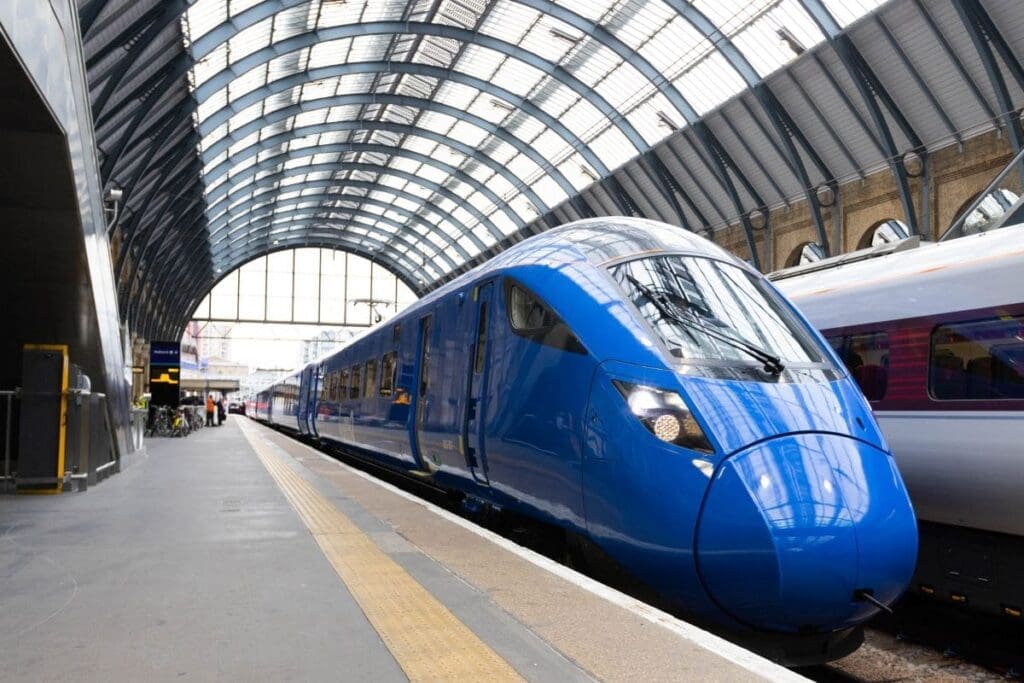Millions across Britain will have access to new open access train services under new rail industry plans.

The PA news agency reported that open access services on seven routes are currently being developed.
Most trains in Britain are run by operators either owned or paid management fees by the UK, Scottish or Welsh governments. However, open access operators set their own fares, take on all revenue risk and receive no taxpayer-funded subsidies.
Enjoy more Railways Illustrated Magazine reading every month.
Click here to subscribe & save.
The UK Government is also planning measures to encourage further proposals, despite concerns that open access services create additional strain on the network and take too much revenue away from conventional operators.
Regulator the Office of Rail and Road will now assesses factors such as the benefit to passengers, whether sufficient new revenue will be generated, and the impact on the punctuality of existing services as it decides whether to approve the new open access applications.
Rail minister Huw Merriman said the UK Government was working to provide more certainty over the duration of the application assessments, reconsidering the required balance of costs between taxpayers and operators, and ensuring all unused track access slots were made available.
He told PA that open access services “give more choice to customers, and that crucially increases the number of passengers that we get”.
He went on: “It’s not just a question of us having rail operators compete with each other.
“There’s an opportunity for rail to take passengers that may otherwise fly or indeed drive.
“Open access is such a positive.
“It doesn’t involve any direct taxpayer subsidies.
“It also breaths new life in terms of working practices.
“There’s no industrial action on open access operators, perhaps because it’s a fresher way of working with the workforce rather than on an old rule book basis.”
Prospective open access company Grand Union Trains (GUT) plans to launch services between London Euston and the city of Stirling in central Scotland from June next year.
It has also been given the go-ahead to run trains between London Paddington and Carmarthen, in south-west Wales, and is consulting on starting services between Edinburgh and Cardiff.
Managing director Ian Yeowart said the growth in passenger numbers on the East Coast Main Line between London King’s Cross and Edinburgh demonstrated the “significant benefits” of open access.
Services on the line are run by Government-owned LNER and open access operators Grand Central, Hull Trains and Lumo.
Mr Yeowart, who founded Grand Central in 1999, said: “There’s sufficient evidence now, particularly on the East Coast Main Line, to say ‘what’s not to like [about open access]?’
“It’s not only good for passengers – as whether [the operators] survive depends on how good they are and what their customers think – but there are no handouts from the Government.
“Like every other business, if people don’t like it and don’t come, it won’t survive.”
Mr Yeowart added that open access provided “services to destinations long forgotten”.
Other current proposals for new open access routes are:
– Services between London King’s Cross and Sheffield by FirstGroup.
– Services between London Euston and Wrexham by Alstom.
– Go-Op running services between Taunton and both Weston-super-Mare and Swindon.
– Lumo extending its London King’s Cross-Edinburgh route to and from Glasgow.
New open access operators competing on the same routes as incumbents typically offer fare reductions of 20-60% in the long-term, according to a report published in summer 2023 by Rail Partners, a body representing private sector train companies.
However rail engineer Gareth Dennis called open access services “incredibly complicated” to fit them in among trains run by operators with Government contracts, saying that they can “actually reduce overall capacity”.
He said: “The argument on the Continent for open access operators is that they provide competition, but there’s no meaningful competition on a rail network that’s as saturated as ours.
“What you need is a simple, repetitive timetable that moves huge numbers of people.”
Mr Dennis said open access operators often charged lower fares because “they don’t have any of the overheads that the rest of the railway has”.
He went on: “They don’t have to pay for depot space because they get to use depots that exist for other companies.
“They don’t have to pay to train their staff because they can just recruit staff trained by the other operators.
“It’s a false economy really.”
He added: “The number of people who benefit from Lumo’s cheap tickets is very, very small compared to the overall picture on the rail network.”
Railway historian Christian Wolmar also expressed concerns about open access operations.
He said: “It’s only good news if the railways don’t end up costing a lot more because these new operators have made it more difficult for the main operators to run services.
“If they’re adding a few new destinations, can they afford to do that without abstracting revenue from a lot of existing operators and therefore pushing up fares?
“I think they could push up fares for everybody at the cost of providing a few new services.”





